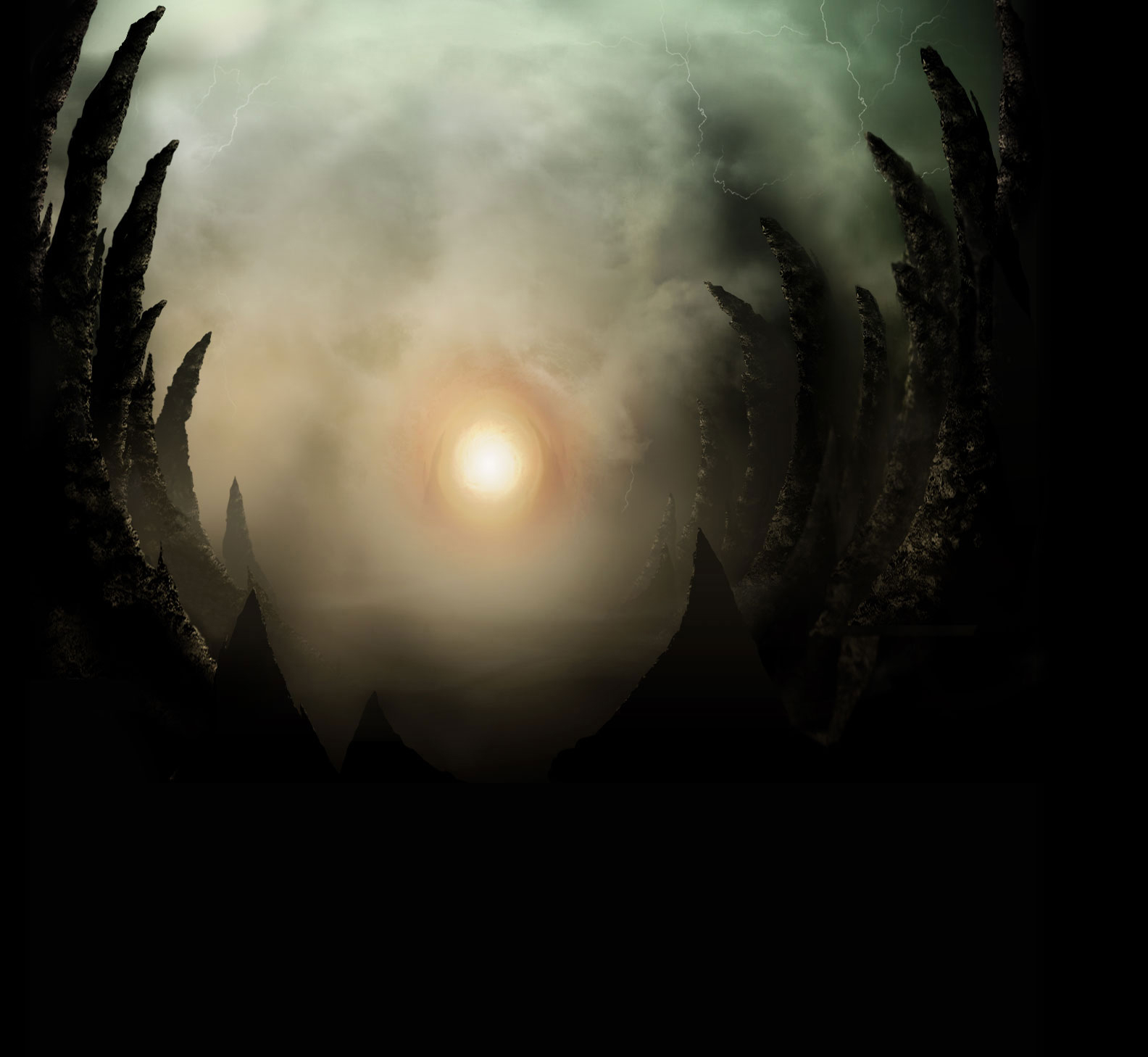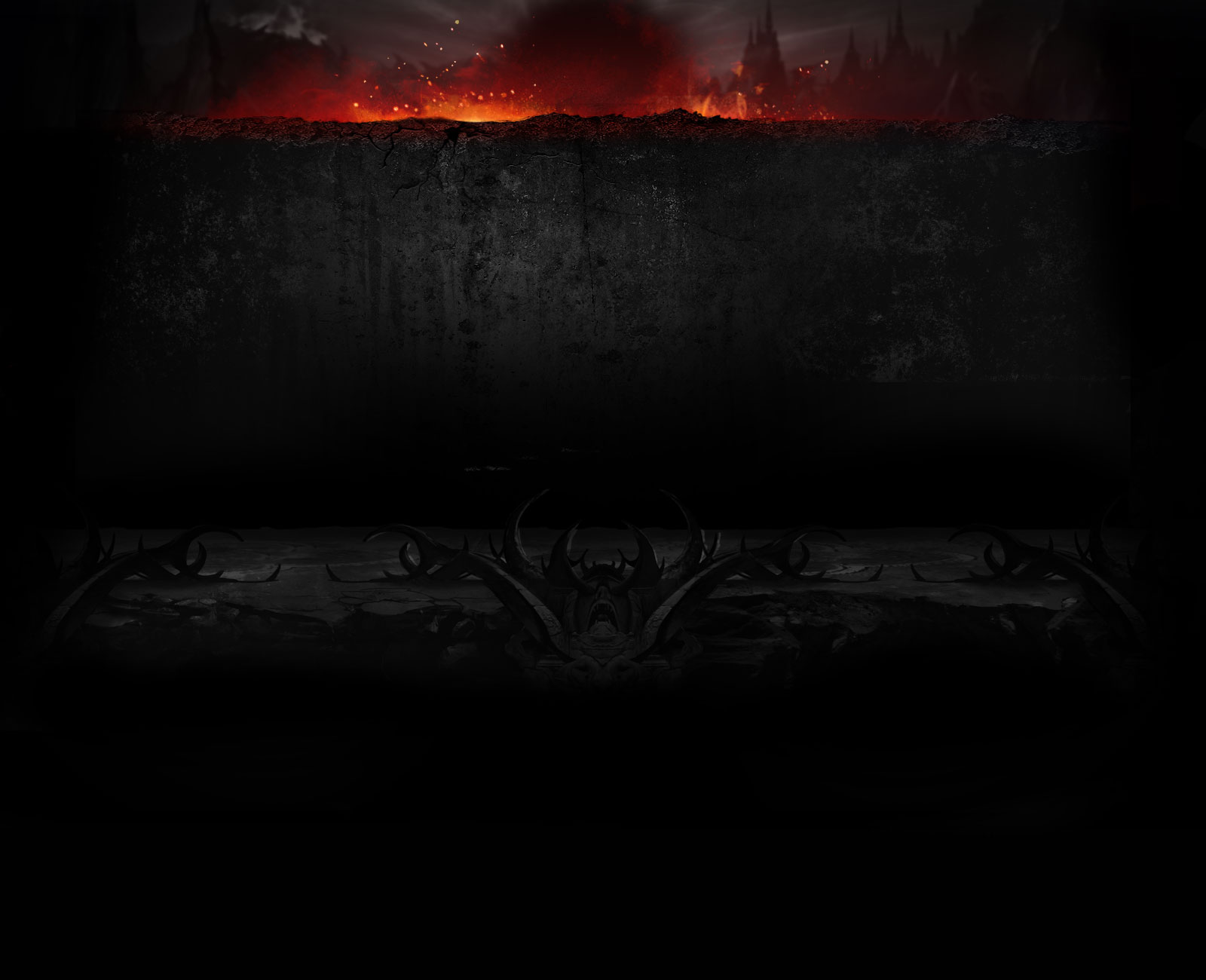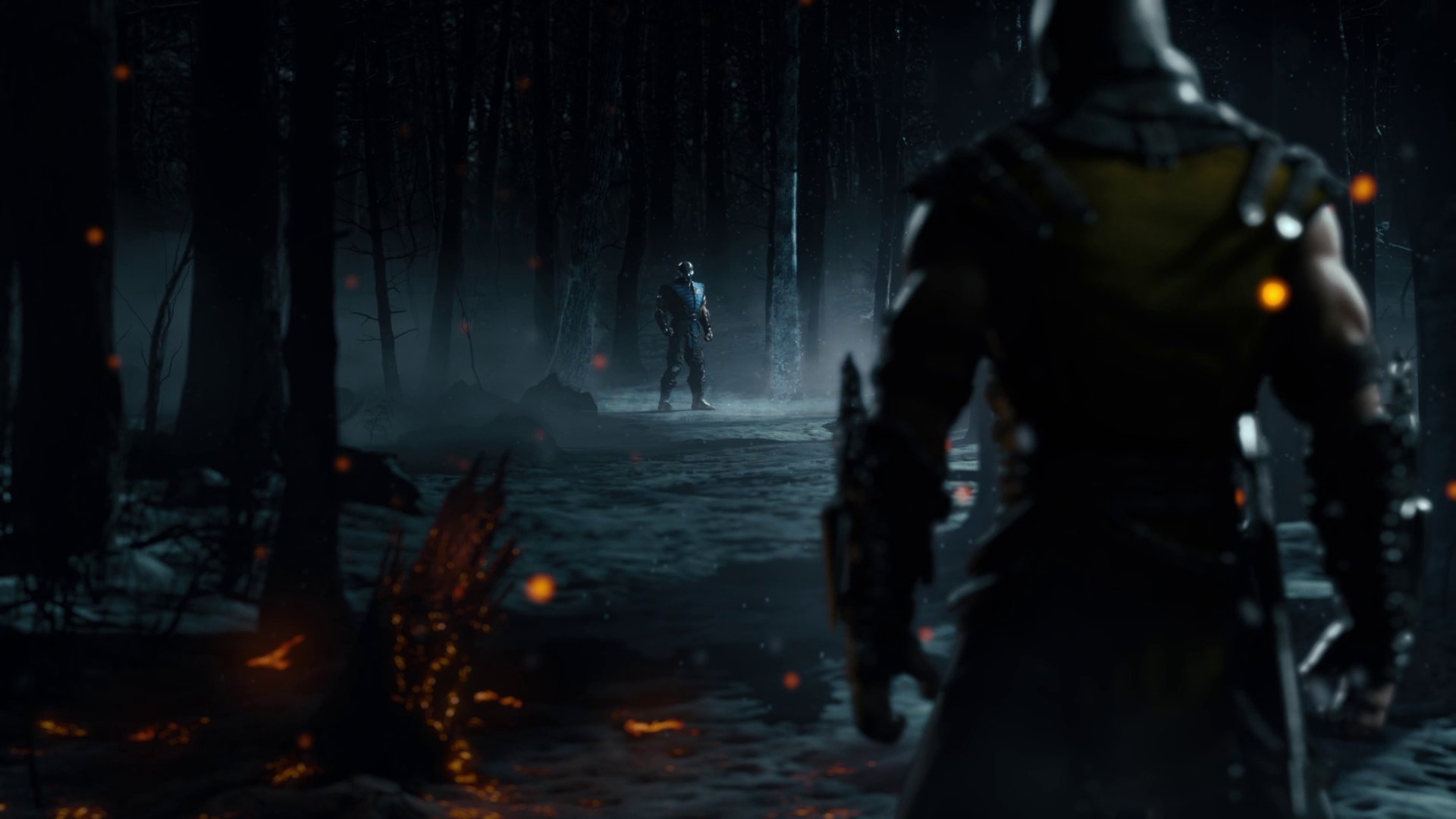General Strategy
All info can also be found in the following video:
I love Pumped Up Jax because he has so many options in the neutral game. He can force his opponent to jump or take risks via his full-screen ground pound/air ground pound/energy wave mixups, he can rush down with his amazing normals and tick-throw setups, he makes his opponent guess correctly or eat 50/50s on wakeup, and he can absolutely dismantle an opponent in the corner. This part of the guide is going to break down each of these aspects of his gameplay separately.
Full-Screen Options
I should go ahead and note right off the bat that most of these options are
heavily matchup dependent and do not work on characters with strong zoning or fast teleports (such as Mileena, Scorpion, Jacqui (Full Auto), Kano (Cybernetic), etc. Against these characters, you'll want to try to get in close. So with that said...
When Jax is full screen, he has a handful of options and mixups. He can zone with Energy Wave and Ground Pound, and keep his opponent out with Dash Punch, Major Pain, and f2. He can also jump... Every time Jax jumps, his opponent has to guess correctly or eat a small (or not so small) amount of damage. This is due to the way his Air Drill Slam, Energy Wave, Ground Tremor, and Ground Quake work together. Every time Jax jumps, he has the following options:
- Air Drill Slam: This can be done extremely low to the ground, or at the very beginning of the jump. If the opponent doesn't jump, they eat 6% unblockable damage.
- Land-Energy Wave: Whether the opponent jumps or not, this is almost always a safe and solid option. You can delay the Energy Wave if necessary. If the opponent does jump, then this option will anti-air and allow for an unblockable Ground Quake OTG for a total of 20% damage. The OTG also leaves Jax at +16, allowing for another jump or a free Energy Wave.
- Land-Ground Tremor: Once your opponent starts to catch on to your mixups, they'll be looking for the purple energy that indicates you're doing the Air Drill Slam. When you land, they know they can't jump because they'll eat and Energy Wave, so they duck. When you notice your opponent doing this, you can start doing regular Ground Tremors after landing.
Along the same lines, once you get your opponent to respect the Ground Tremor, you can feint by tapping down-down. When your opponent sees Jax double-crouch, the know to expect the Ground Tremor and will almost always jump, at which point you can anti-air with Energy Wave and then land an OTG Ground Quake for some good free damage. This is also great because it makes future Ground Tremors that much safer to do, since the opponent will be afraid to jump when they see you double-crouch. It's an utterly safe full-screen mind game.
Besides those jump and feint-based mixups, Jax is able to control full-screen space extremely well with his delayed Energy Waves. Just firing off repeated energy waves after a bout of mixups can be enough to confuse your opponent and can lead to an easy OTG Ground Quake.
Pressure Options
So eventually you are going to have to get up-close and personal with your opponent. Luckily Jax has some amazing pressure tools to make your opponent wish they were still full-screen.
His most important pressure tools are f2 and f21. These are his lunging mid-hitting normals. f2 is a very effective anti-air from around jump distance. It can also help you avoid cross-over attacks. f2 is neutral on block and +12 on hit. f21 is +1 on block and +17 on hit. Because of these excellent frames, you will typically not want to cancel f2 or f21 into specials except in the corner or to mixup an opponent who likes to poke after f21. Some effective pressure strings off of f21 include...
- f2 on block:
- throw: Once you train your opponent to anticipate the d21, f2 throw becomes an extremely effective tool.
- d1-Energy Wave: Unless you notice your opponent neutral-crouching the Energy Wave, this is an amazing tool for maintaining pressure. The d1 has a 7-frame start-up, and the Energy Wave leaves you +7 on block or +10 on hit.
- jump-over 1: Every time the opponent blocks a J1, they have to guess between b2, b3, and throw (overlead/low/unblockable). b2 and b3 both combo if the j1 isn't blocked. Midscreen, you can simply cancel into db1 for 20-22% or bf2d+OTG for 30% 1-bar.
- 11: If the opponent is blocking, Jax's 6-frame standing 1 will connect. The 2nd hit is a mid that comes out on the 15th frame and is +2 on block. This works better once you've trained your opponent to respect the full f21, but it still works pretty well otherwise. You can also cancel into the final hit (111), Energy Wave (db2, leaves you +7 on block), or Gotcha (db1; raw damage) to keep your opponent guessing.
- 123~db2: This works similarly to 11, only the 2nd hit comes out on the 12th frame. This leaves you +7 on block, +10 on hit, and deals 15%. If you're going for raw damage, you can replace the db2 with db1 for 23% total.
- f2 on hit:
- another f2 or f21...
- step forward Throw (just hold forward and as soon as Jax starts to step forward you can throw; this also helps with the timing, since an early throw will whiff)
- b2~special
- b3~special
- j1
- jump back (into jump mixup)
- d4~Downward Dash Punch (risky, but works).
- d4~Energy Wave (just like d1~Energy Wave above, but you need the range of the d4 after f2 hits).
- 11: This requires you to hold toward your opponent, but you don't actually have to wait for Jax to start moving. His front foot will twitch and the 11 will connect. It's weird.
- 123~special: This works similarly to 11, only the 2nd hit comes out on the 12th frame and leads to 23% damage.
- f21 on block:
- all of the options from a blocked f2 work even better because you are +1.
- f21 on hit:
- all of the options from f2 work even better because you are +17 (and no RC is needed if you want to throw; just hold forward after the f21 to take a slight step).
- Naked Ground Tremor works surprisingly well, though it is risky.
- 11 and 123 no longer require you to hold forward; they will just connect like any other attack.
- f212 on block:
- This is -5 and the end of the string, meaning your opponent will try to counterattack, so you always need to block after your f212 is blocked. Don't jump or backdash; you're -5, just block.
- f212 on hit:
- You get a free OTG whenever you hit with f212.
- Run. You're at +43 advantage, which is enough time to run right up next to your opponent and got for a 50/50 (b2/b3), throw, jump-over, block (anticipating a wakeup), or armor bd1/bf2d.
- If you're in the corner, you can combo into d1d2-11-11-134~db1 for 34%.
- f21~Energy Wave on Block: (these actually apply to any normal or string canceled into Energy Wave)
- This is an amazing pressure tool, as long as your opponent is neutral-crouching after a f21.
- All of the options from a blocked f21 still apply, though watch out for armor.
- Another f2 or f21 will work if your opponent doesn't have a 6-frame move. Even if they do, they'll need to do it on the first available frame, assuming you've practiced your timing and are doing your attack on the first available frame. Either way, it's possible for your opponent to poke out, though unlikely. However, you do need to watch out for armor; most opponents expect more pressure after a blocked point-blank energy wave.
- Block: This may seem like a strange option, but everyone knows that a blocked Energy Wave is a frame trap. Therefore Blocked Energy Wave = More Incoming Pressure. So most opponents instinctively go for armor after a blocked Energy Wave, hoping to blow up your pressure. If you block, worst case scenario is they stay on the defensive and you lose some momentum. Best case scenario is they waste a bar of meter and get full-combo punished.
- f21~Energy Wave on Hit:
- When you hit with Energy Wave after f21, it actually pushes your opponent back quite a bit. Your best best is just more f2 pressure, but you have to take a slight step forward.
- You can also Block if you anticipate armor.
- The 2nd hit of 11 will connect, leaving you +2 on block or +27 on hit; this is only avoided by armor or backdash.
Phew, I believe that just about covers his midscreen pressure options. What you're doing with all of this pressure is pushing your opponent into the corner and fishing for hit-confirms into Overhead Dash Punch (for OTG damage) or Super Gotcha for raw damage, and also throws...oh so many throws. For example, after a blocked 11, a lot of opponents will try to counter poke, but if they're not fast enough then they can eat a 123~db1 for 23% damage or a 12% throw, all the while being pushed closer and closer towards the corner.
Anytime you hit with a 11 you get a free 50/50 between b3 and b2; midscreen this leads to around 20% damage, but in the corner you can break 40% meterless.
A throw sends the opponent full-screen; it only takes 3 throws (or f2 throws or 11 throws) to go from one corner to the other, at least in the training stage.
Jax does very little overall midscreen damage, so these pressure strings and throws actually do add up to contend with his bigger midscreen meterless combos (which cap out at around 23%, unless you do his awful 3b2-f21-11-f21~db1 29% combo, which starts off an 11-frame high...). They also keep him almost entirely safe, barring the occasional armored attack.
Corner Pressure
Pretty much all of Jax's pressure options work even better in the corner, but Energy Wave definitely gains the biggest benefit since it doesn't push your opponent away. This allows you to follow up with strings that would otherwise whiff, such as 123.
Your goal in the corner is to keep your opponent there, since Jax's damage output essentially doubles. A good tactic is to pelt your opponent with quick pokes and frame traps until you can confirm into bf2d, anti-air and punish, or block an unsafe special and punish. Be
very careful going for bf2d since most opponents will be looking out for it and will punish it heavily. If you notice your opponent blocking the 3rd hit of 123, then you can usually throw out 12bf2d for a high-risk/high-reward mixup, since you're replacing that low hit with the overhead.
Oki
Most of Jax's damage will come from Super Gotcha, which leaves the opponent standing and Jax at +3, meaning he doesn't have to worry about oki as much as other characters, save for the occasional d2 or dropped combo.
If Jax has no meter, he has to respect his opponent's armored wakeups. He doesn't really have a great way to break armor other than his 123 string, which only works on wakeups that are 10-frames or worse, and it can be difficult to time correctly.
However, if his opponent doesn't have meter and Jax is at enough advantage, he can mix his opponent up between b2 and b3. If you have meter and are midscreen, b2~bf2d followed by an OTG Ground Quake is a very solid option (dealing 30% total damage). In the corner, you can do his b2 meterless corner combo. Remember that the b2 is an option select, which is why it's ok to go for the bf2d followup.
If you use his low starter (b3) then you need to confirm by doing b34. If it hits, then you can do bf2d for an OTG setup midscreen or a full combo in the corner.
The two most common instances of midscreen Oki are going to come from d2 and f212. Anytime you land either of these attacks, you have enough time to run up to your opponent and use a mixup.
The only common source of Oki in the corner is dropped combos. Unfortunately the advantage from these situations can be quite unpredictable. Use your best judgement, but it's usually best to play it safe. d1d2~Energy Wave is a fairly solid option, since the 2-hit string will catch a lot of delayed wakeups, and the Energy Wave allows you to continue your pressure. As always, watch out for armor!
If Jax does have meter, he can break armor with b3~MB.db1 for 26% midscreen, or b3~MB.bfd2-11-11-b34~db1 for 36% corner.
Post Super Gotcha
The post Super Gotcha situation will come up far more often than standard Oki, making this one of the more important sections in this guide.
After a Super Gotcha, the opponent is left standing (meaning they can't use a wakeup attack) and Jax is at +3. How you proceed will depend on the matchup, location (midscreen/corner), and your opponent.
Midscreen Options
If your opponent has no meter, you're only real offensive option is j1 or j3. F2 will get beat out by low pokes, you're out of range of your other options, and you're at the perfect range for an Energy Wave to be jumped and punished. However, that doesn't prevent you from jumping backwards, which leads to your jump-based mixup game we covered earlier.
If your opponent has meter, then it's probably best to play defensively. A j1 is easy to read, allowing them an easy armor punish, which can be devastating for some characters (Kung Jin, Kun Lao, Mileena, etc).
Corner Options
In the corner, the easiest and most consistent follow-up is d1. If you hold "down" after the Super Gotcha, you can just tap "1" as soon as Jax crouches. This is only -5 on block, so if it's blocked, just block their counter-poke and then d1 again. If you hit, you're at +15, which is enough to get your mixups going.
If the opponent tries to jump out, the d1 will anti-air, allowing you to follow up with 11-f21~db1 for 25% damage.
You can even hold down+block, and just release block and hit "1" when you see that your opponent isn't going to armor you. If they do try to jump out, you can d1 or standing 1~throw to put them back in the corner.





